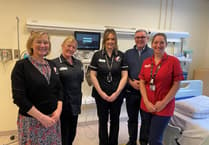An official report has revealed that the island’s death rate from drug misuse is higher than England’s.
Health chiefs commissioned an investigation as part of a five-year substance misuse strategy.
It found that there were 20 deaths or 8.5 per 100,000 from drug misuse between 2013 and 2015.
This represents a figure higher than the average in England, but similar to the North West for the same period.
The comparable figure for England as a whole is 5.8 per 100,000. Of the 20 who died in the Isle of Man between 2013 and 2015, 16 were men.
The report notes that cannabis is the most commonly-seized drug, followed by cocaine and heroin. About half of all arrests in 2014/15 involved alcohol.
It also reported that 74% of people entering the prison had tested positive for at least one drug not prescribed by their GP, 45% jailed for burglary or theft were dependent on illicit drugs and 28% of prisoners have a dependency on prescription drugs.
The report says: ’The joint strategic needs assessment identified that there was anecdotal evidence from the needle exchange service that indicated people on the island are injecting steroids. We will work with key agencies to better understand image-enhancing and performance-enhancing drugs use and raise awareness of the harm associated with their use, such as blood-borne infections and cardiovascular problems.’
There was, however, some good news. The report states that consumption of alcohol among young people is reducing and there is no link between the density of licensed premises and alcohol-related crime.
The findings of the joint strategic needs assessment on drugs and alcohol are included in a substance misuse strategy, which is being laid before Tynwald next week.
That strategy aims to tackle harms associated with substance [drink and drugs] misuse over the next five years to 2023.
The DHSC evidence suggests the most effective education programmes ’combine interactive programmes with high participation, such as peer discussion and active learning’.
It also states that the least effective programmes are those that ’focus solely on scare tactics, knowledge-only approaches, mass media campaigns, the use of ex-users and substance misuse educators in schools, where their input is not part of wider evidence-based prevention programme.’
’Effective interventions are those that combine social competence, and social influences,’ it adds.
The jargon-laden report adds: ’This is best focused on the age where children move from primary to secondary school and [interventions] work to build resilience and confidence in adolescents.’
The strategy report identifies four priority areas for action, including governance, data and performance, education and prevention, legislation and enforcement and treatment and rehabilitation.
It said the strategy was based on a ’compassionate and evidence-based approach’.




